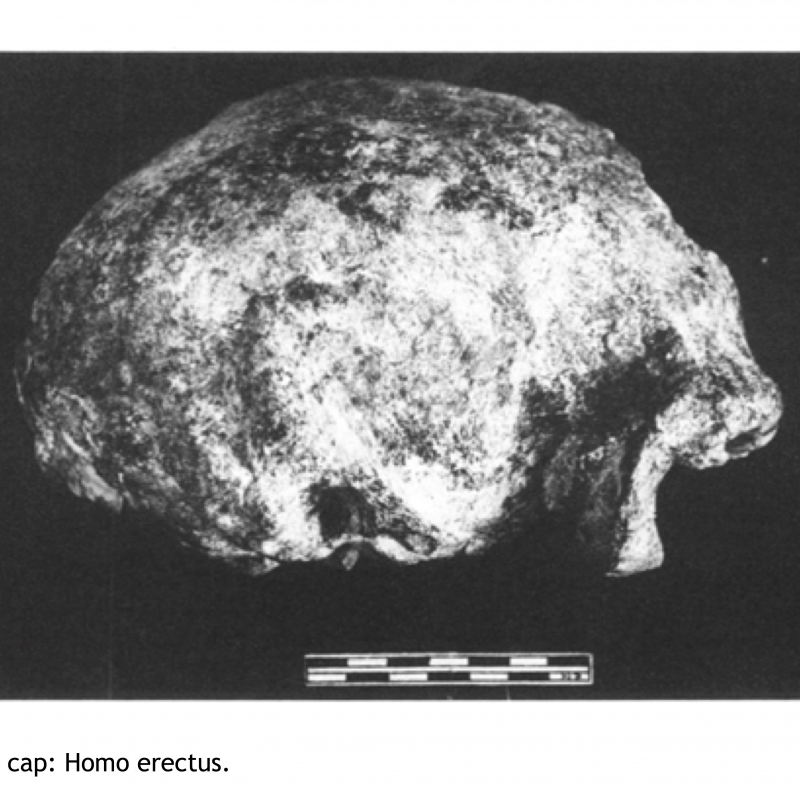The cultural heritage of central India has been studied by historians, archaeologists and anthropologists over a long period of time. This historic landscape dotted with innumerable monuments representing the cultural diversity of India has been discussed in several research papers, popular articles and photo journals. However, this paper concentrates on the cultural landscape of a less-spoken period of Indian history when tools were made only from stone. These stone tools become our door to the study of a period of history far away.
The term central India is often used to denote the present Indian states of Madhya Pradesh and Chhattisgarh. Comprising of 25 princely states, these two states were part of Madhya Bharat after Indian Independence. Later in 1958, a new state Madhya Pradesh was formed comprising of Vindhya Pradesh and Bhopal. However, even today, the term central India is used to denote the central part of India.
Geologically, this place comes under the drainage area of rivers Narmada, Tapi and part of Godavari and Son. Hence, this area is rich in biodiversity and supports a variety of plants and animals. It also supports one of the largest forest reserves in India. This richness of the land may have attracted human beings during the prehistoric times as well. Currently, this area is home to 46 recognised Schedule Tribes, which forms 21.1 per cent of the state population.
Along with this ethnic diversity, central India was a melting pot of various political and religious activities since the Middle Ages. Besides this living heritage, the land is scattered with a number of historical and archaeological sites, which makes it a buzzing hub for archaeophiles. The famous Buddhist religious sites such as Sanchi, Bharhut, etc.; the Khajuraho group of temples; the pillar inscriptions of Besnagar at Vidisha; the monuments of Mandu; Bibi Sahib mosque at Burhanpur; Chanderi Fort; and the World Heritage Site of Bhimbetka, famous for its rock paintings, are few names which may come to our mind when we speak of the cultural landscape of central India.
Among these historical hotspots, the Acheulian sites, which correspond to the lower Palaeolithic culture in India, attract less attention. Acheulian culture is mostly represented in India in the form of the availability of stone tools. The static nature of the stone tools does not interact freely with the common people and pleads for a specific expertise to make sense of it. But understanding them would reveal a whole different world existing here over a million year ago, when humans as hunter-gatherers roamed these forests as a different hominin group, as Homo erectus, before evolving into Homo sapiens, the predecessor of modern human beings.
The term 'Acheulian' is used to denote the Lower Paleolithic period in India which is followed by Middle Paleolithic, Upper Paleolithic, Mesolithic and Neolithic before coming to the Bronze Age civilization of Harappa and Mohenjo-daro. It is the longest period in human history and extends for over a million years. The earliest Acheulian site of Attrimpakkam from Tamil Nadu is dated to 1.5 million years (15 lakh) which gives us a sense of the depth of antiquity of hominin existence in India. The fossil remains of Homo erectus, the hominin species belonging to this period, have been discovered from Narmada Valley of Hathnora in central India by Arun Sonakia in 1980. But unfortunately, apart from this and few other specimens discovered by Dr Sankyan, the Acheulian people have left us only with stone tools.
Elsewhere, the presence of this hominin group is registered by the presence of their stone tools which may be categorised as hand-axes, cleavers, picks, choppers, polyhedrons, scrapers, etc. This tool type is technically part of the Acheulian tool technology. In central India, especially in the state of Madhya Pradesh, an abundance of these stone tools has been reported from many places. These places have been explored and excavated by the archaeologist from the beginning of this century. This forms part of the two ends of the cultural evolution of Man: as a tool maker in the lower Paleolithic, and as a maker of ideas, testified by the magnificent monuments of the historical times. This cultural evolution is recorded in the archaeological sites such as the World Heritage Site of Bhimbetka where evidences signify a continuous existence of humans since the Lower Paleolithic period. This makes us more curious about the Acheulian sites of these places.
Dr Jerome Jacobson mentioned, ‘central India has one of the heaviest concentration of archaeological sites of old world’[i]. His subsequent fieldworks revealed almost 90 sites within a radius of 9 km. Later, many more sites were discovered by scholars and archaeologists in different parts of central India. Major Acheulian sites of central India include Bhimbetka, Adamgarh, Mahadeo Piparia, Durkhadi Nala, Tikoda, Sihawal, Patpara, Nakhjarkhurd, Samnapur, etc. These sites provide evidences pertaining to the early hominid adaptation in the landscape which in turn sheds some light on their culture.
Unlike the other historical sites, the Acheulian sites are devoid of structures and exotic artefacts. Hence it does not interest the general public. It is mostly seen as clusters of stone tools scattered on the ground. They can also be found as isolated finds. For an untrained eye, these stone tools appear as just a heap of stone lying on the ground. Sometimes these are found to be distributed over a vast area of land. The distribution of the stone tools in the vast area helps us determine the extent of their physical activities, such as the catchment area of their resources, food and water, the type of raw materials used for the manufacture of the stone tools, and so on.
Acheulian stone tools
The Acheulian stone tools are often referred to as bifaces. These are shaped stone pieces which had some utilitarian function in the day-to-day life of the hominin groups at that time. It includes the stone tool types such as hand-axe, cleaver, scraper, knife, chopper, etc. These tools are made of flakes which are pieces of stone flaked off from a large stone using a hammerstone, which is usually round. These flakes once removed are further modified by chipping the edges to get the desired shape. These edges of the stone tools are sharp enough for cutting branches of trees or butchering animals. The stone tools such as hand-axes, which have a pointed end, may have also been used for digging out tubers and roots from the soil or for skinning the animals for their hide. The tool-types like cleavers have a broad sharp cutting edge on one end which facilitates the cutting of the desired organic matter whether it is plant or animal. The scrapers are considered as a tool for scraping the meat from the bones of animals or sharpening a stick, which may be used as a spear. In this case, the working edge would be on the side of the stone tool and the other side usually blunted to facilitate a place for holding the tool in hand. Choppers are larger tools which have a sharp edge and are more robust in size. These are part of the heavy-duty tools which may have been used for breaking bones for the extraction of bone marrow, a good source of proteins.
That these stone tools can be categorised into types depending on the patterns in which they were made, makes us realise that they had been designed for specific purposes by the hominin groups. These patterns help the archaeologists understand the technology behind making the stone tools which in turn provides clues to the behavioral patterns of the hominin groups of that period in history. They also help us to understand the mental template of early humans living in this habitat a million years ago. The physical activities our predecessors would indulge in can be gathered from the clusters of stone tools concentrated in one place. Though we have not unearthed much about their dwelling area, the scatter of the stone tools gives a fair idea of their preferences of habitat.
Settlements and activities
The settlement of these hominin groups is found to be both in open air and in the rock shelters. From the nature of the activity area, it may be assumed that there might have been 15 to 20 people in each group. This can be inferred from the fact that the scatter of artefacts are both in open air and rock shelters. However, it is interesting to note that a greater number of artefacts found are in open air with the exception of places like Bhimbetka and Adamgarh, where the artefacts are found in rock shelters. According to prehistorians, this shows a preference amongst the hominin groups to stay outside than to stay in the rock shelters. According to Dr V.N. Misra, who was a professor of Prehistory in Deccan College, Pune, to stay outside they might have used temporary shelters made of tree branches and leaves, a behaviour noticed in present-day chimpanzees too. Palaeolithic archaeologist Prof Sheila Mishra believes that they might have used some form of bags to carry finished stone tools and perhaps some plant remains for their daily use.
Here again, the continuity of similar patterns of making stone tools over a period of more than one million years may be taken as a testimony of a form of grandmothering, an aspect which teaches the younger generation the collective knowledge of the times, which helps to pass certain knowledge systems from generation to generation. Considering the stone tools and the complexities of making it, we cannot rule out a possibility of verbal communication among these groups that might have formed the base of the languages which we have now. But there is no way of confirming it since verbal communication forms a part of the intangible evidence.
Since the Acheulian period deals with a time period which has a time gap of more than a million years, the features described in later time periods may not be applicable here. Whatever survived over this period of time is only the stone tools and some of the features which determine the possible activity of the hominin groups. Unlike the other parts of the world such as Africa, Europe and China, the lack of hominin fossils is one of the major limitations in understanding the evolution and the nature of the hominin groups in India and its status in the world context.
It is because of these reasons that central India is important, as it is a primary site which gives undisturbed data in the form of stone tools for understanding the hominin group in India. However, recent human activities pose a major threat to this area. As identification of these sites requires expertise, ignorance means activities like construction, farming, and mining goes on unhindered in these areas. It is the same lack of awareness due to which these areas also do not come under the radar of the cultural enthusiast who works for the cause of the historical monuments. The evidence found here might one day prove that the Indian subcontinent was actually one of the earliest landscapes of human settlement. For such an investigation, the stone tools, otherwise a static element in the artefact kit of prehistorians, will be of utmost relevance helping us identify the earliest cultural patterns which govern us as human beings.
Notes
[i] Jacobson J. 1985. 'Acheulian Surface Sites in Central India', in V.N. Mishra and P. Bellwood eds. Recent Advances in Indo-Pacific Prehistory. 49-57. New Delhi: Oxford IBH.

